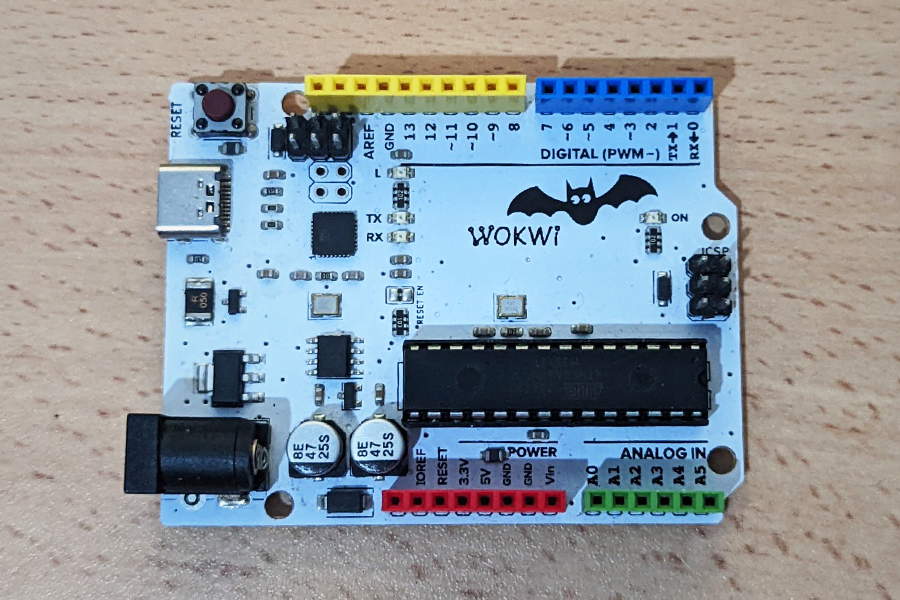Use Cases
May 29, 2022
Training vision AI model for Arduino board recognition with synthetic data
Wokwi is an online Electronics simulator that can be used to simulate Arduino, ESP32, and many other popular boards, parts, and sensors. This browser-based solution is a great online tool for simulating projects that use a development board. It offers a fantastic text-based code editor and various components users can place in their design.
We ran an experiment together with the Wokwi team to generate a computer vision AI model by using Synthetic data.

Generating 3D Models
This board comes with 42 SMT components. In order to create a realistic 3D model for synthetic image generation, we had to pay attention to many small details. While bigger components are modeled, some smaller components are part of the texture. This strategy allowed us to create a 3D model that is lightweight, without adding unnecessary polygons.
Data labeling and model training
With the use of realistic 3D models and the help of syntheticAIdata service you can train your custom vision model with 3 simple steps:
- 1. Uploading the 3D model
- 2. Configuring the options
- 3. Generating Synthetic Data
In this case, in the second step, we chose background images from our “Industry” image category.
During the model generation process, the 3D model of the board was rendered from multiple angles on top of various backgrounds. This process enables the vision AI to detect the board from different angles in various scenes which increases the accuracy of the model.
During the model generation process, the 3D model of the board was rendered from multiple angles on top of various backgrounds. This process enables the vision AI to detect the board from different angles in various scenes which increases the accuracy of the model.
The following video shows several synthetic images generated in the process and testing results.
Object detection
Detection of boards with vision AI could be for example used in factories to verify the production process, in schools to verify the assembly of the boards, in electronics stores to verify the quality of the boards, and in many more different scenarios. Process of creating a 3D model of the board is simple and fast, and previously prepared graphics for board cover can be reused for texture that will be applied to the model. Generating synthetic images for vision AI model training shortens the time and minimises costs for data collection.
Nowadays, vision AI is more and more used in different industries, and solutions we see developed are widely using AI on the Edge. With direct integration to the Azure Custom Vision and Edge Impulse, syntheticAIdata can help you generate and publish models on your edge device in a matter of minutes.
Contact us via hello@syntheticaidata.com if you have any questions about this experiment or whether you want us to help your business with our product. We are happy to help!
About Wokwi
Project Wokwi was started by Uri Shaked, Google Developer Expert for Web and Cloud Technologies. Uri regularly speaks about Web and IoT-related topics in conferences and meetups around the world. During his interesting career, he developed several great projects, one of them being the Arduino board which we used in this use case. What is specific about this Arduino board is that it comes with a USB-type C connector, which is a really nice detail. This browser-based solution has everything you need to start coding your next IoT project in seconds.
If you are interested in specialist training and resources for Arduino, ESP32, and other electronics, we highly recommend checking out Wokwi. And don't forget to join the project Discord community or Facebook group.